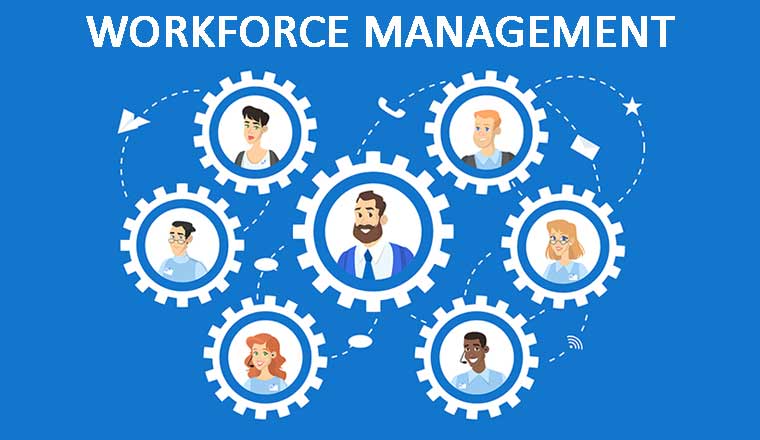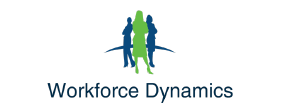Workforce Resilience: Lessons from Digital Age Misinformation
8 min read
In an increasingly interconnected yet fractured digital landscape, organizational resilience hinges on two critical pillars: transparent communication and robust employee well-being initiatives. The rapid dissemination of unverified information, often escalating into digital misinformation, poses an existential threat to workplace stability, productivity, and the collective mental health of a workforce. Navigating this challenge requires a proactive approach to digital communication and a profound commitment to fostering employee well-being.
The Spreading Scourge of Digital Misinformation
The digital age, while connecting us globally, has simultaneously created fertile ground for misinformation to flourish. From viral social media posts to unverified news reports, the speed at which inaccurate information spreads can have devastating real-world consequences, eroding trust and causing widespread anxiety. A poignant recent example, albeit outside the corporate sphere, highlights this vulnerability: the initial erroneous reports surrounding the cause of veteran actor Satish Shah’s passing.
Initially, news circulated that Shah, beloved for his role in ‘Sarabhai vs Sarabhai’, had succumbed to kidney failure. This unverified detail rapidly spread across social media platforms, causing grief and confusion among fans and colleagues. It wasn’t until his co-star, Rajesh Kumar, stepped forward with transparent digital communication to clarify that Shah had, in fact, passed away due to a sudden heart attack, with his kidney issues already under control. This incident underscores a vital lesson for organizations: uncorrected misinformation, no matter its origin, can quickly solidify into perceived truth, generating undue stress and undermining morale.
For businesses, the threat of misinformation extends to internal operations, employee perceptions, and even market confidence. Rumors about layoffs, company financial instability, or shifts in corporate strategy can spread like wildfire through internal messaging apps and social media, creating an environment of uncertainty that severely impacts employee engagement and productivity. Without a strong framework for transparent workforce digital communication, organizations risk losing control of their narrative and fostering an environment ripe for distress.
A recent global survey by Edelman indicated that nearly 70% of employees worry about misinformation affecting their workplace, impacting job security and company stability. This pervasive concern directly links to employee well-being, highlighting the urgent need for employers to take proactive measures. The blurring lines between professional and personal digital lives mean that even external misinformation can seep into the workplace, affecting morale and perception if not addressed with clarity and empathy.
Building Resilience Through Transparent Communication and Well-being
In response to these evolving threats, leading organizations are championing comprehensive strategies that prioritize open communication and employee welfare. These are not merely HR buzzwords but fundamental components of organizational resilience in the digital age, essential for maintaining a stable and productive workforce.
Cultivating a Culture of Transparent Digital Communication
Effective digital communication strategies are critical in mitigating the impact of misinformation. They build trust, reduce anxiety, and ensure that employees are well-informed, allowing them to focus on their roles rather than circulating rumors.
- Proactive Information Dissemination: Organizations must actively anticipate potential information gaps and fill them with verified, clear, and consistent messages. This includes regular updates on company performance, policy changes, and future directions, delivered through official channels like dedicated intranet portals or internal newsletters.
- Designated Truth Channels: Establishing clear, trusted sources for internal information, such as an official intranet, dedicated internal news portals, or CEO video messages, helps employees distinguish verified facts from speculation. These platforms serve as a central hub for reliable workforce digital communication, countering the fragmented nature of social media.
- Open Dialogue and Feedback Loops: Transparency is a two-way street. Encouraging employees to ask questions, voice concerns, and provide feedback without fear of reprisal fosters an environment of psychological safety and trust. Regular town halls, anonymous suggestion boxes, and dedicated Q&A sessions with leadership can be invaluable tools for this.
- Crisis Communication Protocols: Developing robust plans for addressing misinformation quickly and effectively is paramount. This involves identifying potential threats, designating clear spokespersons, crafting precise messaging, and utilizing appropriate digital communication platforms for rapid dissemination and correction. Speed and accuracy are key in crisis situations.
- Digital Literacy and Critical Thinking Training: Equipping employees with the skills to identify misinformation, critically evaluate digital content, and practice responsible online behavior protects both individuals and the organization. This enhances their ability to engage in effective workforce digital communication and become advocates for truth.
Prioritizing Employee Well-being in a Challenging Environment
Beyond communication, the mental and emotional health of employees, particularly in the face of uncertainty and misinformation, is a cornerstone of resilience. A stressed or anxious workforce is a vulnerable one, less productive and more prone to burnout.
- Comprehensive Mental Health Support Programs: Providing readily accessible counseling services, mental health resources, and employee assistance programs (EAPs) is no longer a luxury but a necessity. Companies are increasingly investing in comprehensive well-being platforms that offer support for stress, anxiety, burnout, and mental health challenges aggravated by digital overload.
- Promoting Work-Life Balance and Digital Detox: The blurred lines between work and personal life, exacerbated by remote work and constant connectivity, contribute significantly to burnout. Organizations must actively encourage healthy boundaries, flexible working arrangements, and initiatives that promote personal time, digital detox, and adequate rest.
- Leadership by Example: Leaders play a crucial role in destigmatizing mental health issues and encouraging employees to prioritize their well-being. When leaders openly discuss their own strategies for managing stress and maintaining balance, it creates a culture where others feel empowered to do the same without fear of judgment.
- Building Community and Connection: In an era of remote and hybrid work, fostering strong team bonds and a sense of community is vital for employee well-being. Regular team check-ins, virtual social events, and opportunities for informal interactions can counteract feelings of isolation and enhance collective resilience.
The Repercussions for a Diverse Workforce, Including International Students
The impact of misinformation and the crucial need for transparent communication and well-being support are particularly pronounced for a diverse workforce, including international students navigating new professional landscapes. These individuals often face unique challenges that amplify the effects of organizational instability, making clear digital communication and dedicated well-being support indispensable.
International students, whether working part-time, in internships, or in post-graduation roles, are often more susceptible to the anxieties fostered by misinformation. They may be unfamiliar with local corporate culture, social cues, or the nuances of internal digital communication. Rumors about company changes—such as impending layoffs, restructuring, or shifts in benefits—can be particularly unsettling, as their employment status might be intricately tied to their immigration conditions. A perceived threat to job security, even if unfounded, can trigger significant stress, affecting their academic performance, professional integration, and overall mental health.
Furthermore, a lack of transparent workforce digital communication can lead to feelings of isolation and alienation. International students may struggle to discern official company directives from informal gossip, leading to confusion, reduced trust in management, and a sense of being “out of the loop.” When employers proactively disseminate accurate information and create accessible channels for clarification, they not only combat misinformation but also foster a more inclusive and supportive environment. This dedication to clear, culturally sensitive workforce digital communication can be a lifeline for those new to a country’s professional environment.
Prioritizing well-being is equally vital for this demographic. International students often grapple with cultural adjustment, homesickness, language barriers, and academic pressures alongside work demands. Misinformation adds another layer of stress to an already complex situation. Organizations that offer culturally sensitive mental health resources, mentorship programs, and clear guidance on balancing work and personal life can significantly improve the retention, performance, and overall positive experience of this critical talent pool. Ignoring their specific well-being needs risks losing valuable skills, undermining the diversity of the workforce, and failing to harness their full potential.
Cultivating a Culture of Trust and Care: Practical Steps
For organizations looking to build genuine resilience in the face of digital misinformation, integrating these principles requires intentional, continuous effort. “It’s not enough to just communicate; you must communicate effectively, empathetically, and consistently,” states Dr. Alisha Singh, a leading expert in organizational psychology. “And every communication strategy must be underpinned by a genuine concern for employee well-being. They are two sides of the same coin when facing digital threats, especially for a diverse and global workforce.”
Here are practical tips for leaders and HR professionals:
- Audit Your Digital Communication Channels: Regularly review and optimize all platforms used for internal communication (e.g., email, Slack, Teams, intranet, social media groups). Ensure official channels are clearly distinguishable, easy to navigate, and consistently updated with verified information.
- Train Leaders as Communication Ambassadors: Equip managers and team leads with the skills to identify misinformation, address employee concerns transparently, and redirect team members to official, verified sources. Their role in localized and frontline workforce digital communication is crucial for trust-building.
- Invest in Digital Literacy Training for All Employees: Provide workshops and resources on critical thinking, identifying misleading content (e.g., deepfakes, manipulated news), and practicing responsible sharing of information. Empower your workforce to be part of the solution in preventing the spread of misinformation.
- Implement Regular Pulse Surveys on Well-being: Proactively gauge employee sentiment, stress levels, and specific concerns related to misinformation or organizational changes. Use this real-time data to tailor and enhance well-being initiatives, ensuring they are relevant and impactful.
- Promote a “Safe Space” for Concerns: Actively foster an environment where employees feel comfortable reporting potential misinformation or expressing worries without fear of judgment or reprisal. This might involve anonymous reporting mechanisms or dedicated HR channels.
- Highlight and Champion Well-being Resources: Continuously remind employees of available mental health support, Employee Assistance Programs (EAPs), counseling services, and other well-being programs. Make access easy, visible, and confidential, ensuring support is culturally appropriate for a diverse workforce.
- Leverage Technology for Verification: Explore tools and platforms that can help track potential misinformation related to your organization online, allowing for quicker responses and corrections via official channels.
The Evolving Landscape of Organizational Resilience
As technology continues to advance and the digital information sphere becomes even more complex, the demands on organizational resilience will only intensify. The challenges posed by AI-generated misinformation, sophisticated deepfakes, and increasingly personalized phishing attempts underscore the ongoing need for vigilance, adaptation, and continuous investment in both human and technological defenses. Organizations that embed transparent workforce digital communication and prioritize employee well-being into their core operational DNA will be best positioned to thrive amidst these evolving threats.
The future of work is undeniably digital, global, and subject to constant flux. Companies that view communication as a strategic asset—a shield against misinformation and a bridge to understanding—and employee well-being as a critical investment will not only weather future storms but also cultivate a loyal, productive, and resilient workforce. This proactive stance ensures that the foundation of trust remains strong, even when external forces attempt to destabilize it, fostering an environment where every member, including international students, can contribute and flourish.
Reach out to us for personalized consultation based on your specific requirements.



